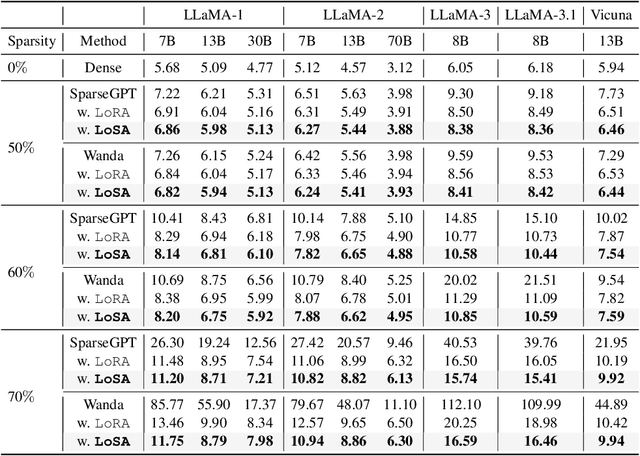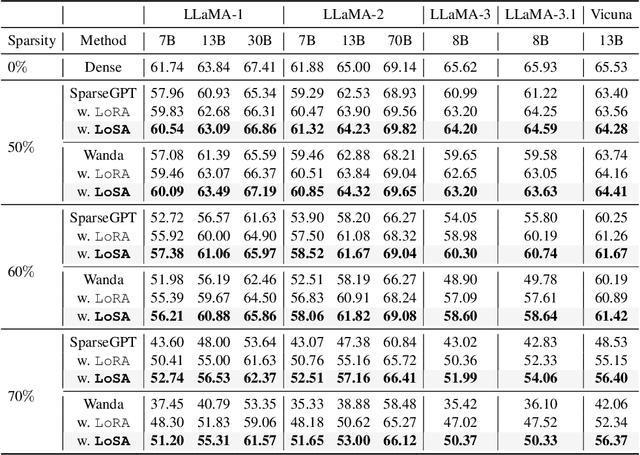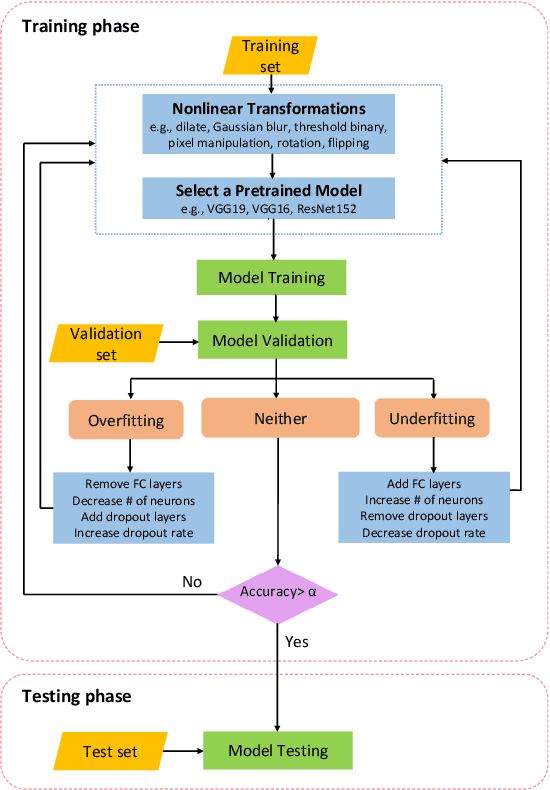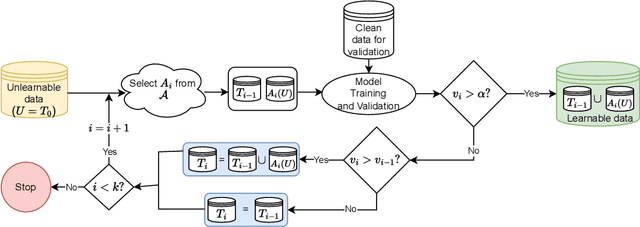Jing Lin
The Quest for Generalizable Motion Generation: Data, Model, and Evaluation
Oct 30, 2025Abstract:Despite recent advances in 3D human motion generation (MoGen) on standard benchmarks, existing models still face a fundamental bottleneck in their generalization capability. In contrast, adjacent generative fields, most notably video generation (ViGen), have demonstrated remarkable generalization in modeling human behaviors, highlighting transferable insights that MoGen can leverage. Motivated by this observation, we present a comprehensive framework that systematically transfers knowledge from ViGen to MoGen across three key pillars: data, modeling, and evaluation. First, we introduce ViMoGen-228K, a large-scale dataset comprising 228,000 high-quality motion samples that integrates high-fidelity optical MoCap data with semantically annotated motions from web videos and synthesized samples generated by state-of-the-art ViGen models. The dataset includes both text-motion pairs and text-video-motion triplets, substantially expanding semantic diversity. Second, we propose ViMoGen, a flow-matching-based diffusion transformer that unifies priors from MoCap data and ViGen models through gated multimodal conditioning. To enhance efficiency, we further develop ViMoGen-light, a distilled variant that eliminates video generation dependencies while preserving strong generalization. Finally, we present MBench, a hierarchical benchmark designed for fine-grained evaluation across motion quality, prompt fidelity, and generalization ability. Extensive experiments show that our framework significantly outperforms existing approaches in both automatic and human evaluations. The code, data, and benchmark will be made publicly available.
DPoser-X: Diffusion Model as Robust 3D Whole-body Human Pose Prior
Aug 01, 2025Abstract:We present DPoser-X, a diffusion-based prior model for 3D whole-body human poses. Building a versatile and robust full-body human pose prior remains challenging due to the inherent complexity of articulated human poses and the scarcity of high-quality whole-body pose datasets. To address these limitations, we introduce a Diffusion model as body Pose prior (DPoser) and extend it to DPoser-X for expressive whole-body human pose modeling. Our approach unifies various pose-centric tasks as inverse problems, solving them through variational diffusion sampling. To enhance performance on downstream applications, we introduce a novel truncated timestep scheduling method specifically designed for pose data characteristics. We also propose a masked training mechanism that effectively combines whole-body and part-specific datasets, enabling our model to capture interdependencies between body parts while avoiding overfitting to specific actions. Extensive experiments demonstrate DPoser-X's robustness and versatility across multiple benchmarks for body, hand, face, and full-body pose modeling. Our model consistently outperforms state-of-the-art alternatives, establishing a new benchmark for whole-body human pose prior modeling.
RainFusion: Adaptive Video Generation Acceleration via Multi-Dimensional Visual Redundancy
May 27, 2025Abstract:Video generation using diffusion models is highly computationally intensive, with 3D attention in Diffusion Transformer (DiT) models accounting for over 80\% of the total computational resources. In this work, we introduce {\bf RainFusion}, a novel training-free sparse attention method that exploits inherent sparsity nature in visual data to accelerate attention computation while preserving video quality. Specifically, we identify three unique sparse patterns in video generation attention calculations--Spatial Pattern, Temporal Pattern and Textural Pattern. The sparse pattern for each attention head is determined online with negligible overhead (\textasciitilde\,0.2\%) with our proposed {\bf ARM} (Adaptive Recognition Module) during inference. Our proposed {\bf RainFusion} is a plug-and-play method, that can be seamlessly integrated into state-of-the-art 3D-attention video generation models without additional training or calibration. We evaluate our method on leading open-sourced models including HunyuanVideo, OpenSoraPlan-1.2 and CogVideoX-5B, demonstrating its broad applicability and effectiveness. Experimental results show that RainFusion achieves over {\bf 2\(\times\)} speedup in attention computation while maintaining video quality, with only a minimal impact on VBench scores (-0.2\%).
FreeKV: Boosting KV Cache Retrieval for Efficient LLM Inference
May 19, 2025Abstract:Large language models (LLMs) have been widely deployed with rapidly expanding context windows to support increasingly demanding applications. However, long contexts pose significant deployment challenges, primarily due to the KV cache whose size grows proportionally with context length. While KV cache compression methods are proposed to address this issue, KV dropping methods incur considerable accuracy loss, and KV retrieval methods suffer from significant efficiency bottlenecks. We propose FreeKV, an algorithm-system co-optimization framework to enhance KV retrieval efficiency while preserving accuracy. On the algorithm side, FreeKV introduces speculative retrieval to shift the KV selection and recall processes out of the critical path, combined with fine-grained correction to ensure accuracy. On the system side, FreeKV employs hybrid KV layouts across CPU and GPU memory to eliminate fragmented data transfers, and leverages double-buffered streamed recall to further improve efficiency. Experiments demonstrate that FreeKV achieves near-lossless accuracy across various scenarios and models, delivering up to 13$\times$ speedup compared to SOTA KV retrieval methods.
HumanMM: Global Human Motion Recovery from Multi-shot Videos
Mar 10, 2025Abstract:In this paper, we present a novel framework designed to reconstruct long-sequence 3D human motion in the world coordinates from in-the-wild videos with multiple shot transitions. Such long-sequence in-the-wild motions are highly valuable to applications such as motion generation and motion understanding, but are of great challenge to be recovered due to abrupt shot transitions, partial occlusions, and dynamic backgrounds presented in such videos. Existing methods primarily focus on single-shot videos, where continuity is maintained within a single camera view, or simplify multi-shot alignment in camera space only. In this work, we tackle the challenges by integrating an enhanced camera pose estimation with Human Motion Recovery (HMR) by incorporating a shot transition detector and a robust alignment module for accurate pose and orientation continuity across shots. By leveraging a custom motion integrator, we effectively mitigate the problem of foot sliding and ensure temporal consistency in human pose. Extensive evaluations on our created multi-shot dataset from public 3D human datasets demonstrate the robustness of our method in reconstructing realistic human motion in world coordinates.
Dynamic Low-Rank Sparse Adaptation for Large Language Models
Feb 20, 2025



Abstract:Despite the efficacy of network sparsity in alleviating the deployment strain of Large Language Models (LLMs), it endures significant performance degradation. Applying Low-Rank Adaptation (LoRA) to fine-tune the sparse LLMs offers an intuitive approach to counter this predicament, while it holds shortcomings include: 1) The inability to integrate LoRA weights into sparse LLMs post-training, and 2) Insufficient performance recovery at high sparsity ratios. In this paper, we introduce dynamic Low-rank Sparse Adaptation (LoSA), a novel method that seamlessly integrates low-rank adaptation into LLM sparsity within a unified framework, thereby enhancing the performance of sparse LLMs without increasing the inference latency. In particular, LoSA dynamically sparsifies the LoRA outcomes based on the corresponding sparse weights during fine-tuning, thus guaranteeing that the LoRA module can be integrated into the sparse LLMs post-training. Besides, LoSA leverages Representation Mutual Information (RMI) as an indicator to determine the importance of layers, thereby efficiently determining the layer-wise sparsity rates during fine-tuning. Predicated on this, LoSA adjusts the rank of the LoRA module based on the variability in layer-wise reconstruction errors, allocating an appropriate fine-tuning for each layer to reduce the output discrepancies between dense and sparse LLMs. Extensive experiments tell that LoSA can efficiently boost the efficacy of sparse LLMs within a few hours, without introducing any additional inferential burden. For example, LoSA reduced the perplexity of sparse LLaMA-2-7B by 68.73 and increased zero-shot accuracy by 16.32$\%$, achieving a 2.60$\times$ speedup on CPU and 2.23$\times$ speedup on GPU, requiring only 45 minutes of fine-tuning on a single NVIDIA A100 80GB GPU. Code is available at https://github.com/wzhuang-xmu/LoSA.
Motion-X++: A Large-Scale Multimodal 3D Whole-body Human Motion Dataset
Jan 09, 2025



Abstract:In this paper, we introduce Motion-X++, a large-scale multimodal 3D expressive whole-body human motion dataset. Existing motion datasets predominantly capture body-only poses, lacking facial expressions, hand gestures, and fine-grained pose descriptions, and are typically limited to lab settings with manually labeled text descriptions, thereby restricting their scalability. To address this issue, we develop a scalable annotation pipeline that can automatically capture 3D whole-body human motion and comprehensive textural labels from RGB videos and build the Motion-X dataset comprising 81.1K text-motion pairs. Furthermore, we extend Motion-X into Motion-X++ by improving the annotation pipeline, introducing more data modalities, and scaling up the data quantities. Motion-X++ provides 19.5M 3D whole-body pose annotations covering 120.5K motion sequences from massive scenes, 80.8K RGB videos, 45.3K audios, 19.5M frame-level whole-body pose descriptions, and 120.5K sequence-level semantic labels. Comprehensive experiments validate the accuracy of our annotation pipeline and highlight Motion-X++'s significant benefits for generating expressive, precise, and natural motion with paired multimodal labels supporting several downstream tasks, including text-driven whole-body motion generation,audio-driven motion generation, 3D whole-body human mesh recovery, and 2D whole-body keypoints estimation, etc.
LLM-based MOFs Synthesis Condition Extraction using Few-Shot Demonstrations
Aug 06, 2024



Abstract:The extraction of Metal-Organic Frameworks (MOFs) synthesis conditions from literature text has been challenging but crucial for the logical design of new MOFs with desirable functionality. The recent advent of large language models (LLMs) provides disruptively new solution to this long-standing problem and latest researches have reported over 90% F1 in extracting correct conditions from MOFs literature. We argue in this paper that most existing synthesis extraction practices with LLMs stay with the primitive zero-shot learning, which could lead to downgraded extraction and application performance due to the lack of specialized knowledge. This work pioneers and optimizes the few-shot in-context learning paradigm for LLM extraction of material synthesis conditions. First, we propose a human-AI joint data curation process to secure high-quality ground-truth demonstrations for few-shot learning. Second, we apply a BM25 algorithm based on the retrieval-augmented generation (RAG) technique to adaptively select few-shot demonstrations for each MOF's extraction. Over a dataset randomly sampled from 84,898 well-defined MOFs, the proposed few-shot method achieves much higher average F1 performance (0.93 vs. 0.81, +14.8%) than the native zero-shot LLM using the same GPT-4 model, under fully automatic evaluation that are more objective than the previous human evaluation. The proposed method is further validated through real-world material experiments: compared with the baseline zero-shot LLM, the proposed few-shot approach increases the MOFs structural inference performance (R^2) by 29.4% in average.
RazorAttention: Efficient KV Cache Compression Through Retrieval Heads
Jul 22, 2024Abstract:The memory and computational demands of Key-Value (KV) cache present significant challenges for deploying long-context language models. Previous approaches attempt to mitigate this issue by selectively dropping tokens, which irreversibly erases critical information that might be needed for future queries. In this paper, we propose a novel compression technique for KV cache that preserves all token information. Our investigation reveals that: i) Most attention heads primarily focus on the local context; ii) Only a few heads, denoted as retrieval heads, can essentially pay attention to all input tokens. These key observations motivate us to use separate caching strategy for attention heads. Therefore, we propose RazorAttention, a training-free KV cache compression algorithm, which maintains a full cache for these crucial retrieval heads and discards the remote tokens in non-retrieval heads. Furthermore, we introduce a novel mechanism involving a "compensation token" to further recover the information in the dropped tokens. Extensive evaluations across a diverse set of large language models (LLMs) demonstrate that RazorAttention achieves a reduction in KV cache size by over 70% without noticeable impacts on performance. Additionally, RazorAttention is compatible with FlashAttention, rendering it an efficient and plug-and-play solution that enhances LLM inference efficiency without overhead or retraining of the original model.
Nonlinear Transformations Against Unlearnable Datasets
Jun 05, 2024



Abstract:Automated scraping stands out as a common method for collecting data in deep learning models without the authorization of data owners. Recent studies have begun to tackle the privacy concerns associated with this data collection method. Notable approaches include Deepconfuse, error-minimizing, error-maximizing (also known as adversarial poisoning), Neural Tangent Generalization Attack, synthetic, autoregressive, One-Pixel Shortcut, Self-Ensemble Protection, Entangled Features, Robust Error-Minimizing, Hypocritical, and TensorClog. The data generated by those approaches, called "unlearnable" examples, are prevented "learning" by deep learning models. In this research, we investigate and devise an effective nonlinear transformation framework and conduct extensive experiments to demonstrate that a deep neural network can effectively learn from the data/examples traditionally considered unlearnable produced by the above twelve approaches. The resulting approach improves the ability to break unlearnable data compared to the linear separable technique recently proposed by researchers. Specifically, our extensive experiments show that the improvement ranges from 0.34% to 249.59% for the unlearnable CIFAR10 datasets generated by those twelve data protection approaches, except for One-Pixel Shortcut. Moreover, the proposed framework achieves over 100% improvement of test accuracy for Autoregressive and REM approaches compared to the linear separable technique. Our findings suggest that these approaches are inadequate in preventing unauthorized uses of data in machine learning models. There is an urgent need to develop more robust protection mechanisms that effectively thwart an attacker from accessing data without proper authorization from the owners.
 Add to Chrome
Add to Chrome Add to Firefox
Add to Firefox Add to Edge
Add to Edge